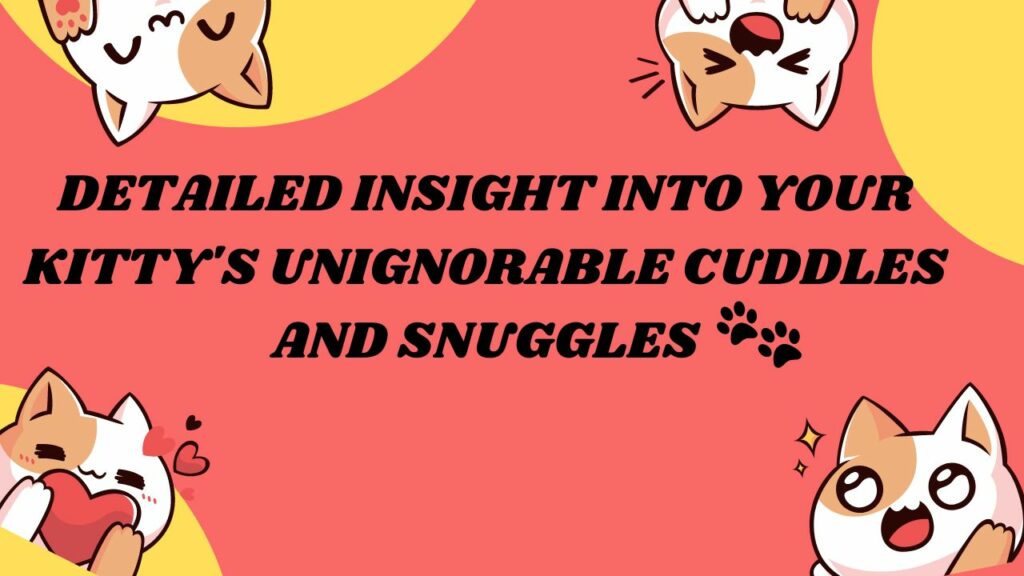A Detailed Insight Into Your Kitty's Sweet & Unignorable Cuddles & Snuggles
Cozy Cat Cuddles: Snuggle Up with Your Feline Friend
Did you know that a significant number of cat owners consider their feline companions as part of the family? This deep bond is often strengthened by moments of affection, such as cozy kitty snuggles.
These tender interactions not only bring joy to the owners but also seem to have a profound effect on the cats themselves. Understanding the dynamics of such affectionate behavior can provide valuable insights into the emotional lives of our feline friends.
Our cattos undoubtedly make us experience the most beautiful and unconditional sacrosanct love that simply can’t be put into words. They are always by our side through thick and thin, irrespective of our circumstances.
Also these feline babies love to cuddle and snuggle, butting their head all over our body and face, and that’s how they make their forever space in our hearts, with their cute antics and supremely charming grace.
As we explore the world of cat cuddles, it becomes clear that these moments of tenderness are more than just cute displays of affection. They represent a deep-seated connection between cats and their human caregivers.
The Purr-fect Science Behind Feline Affection
Understanding Your Cat's Snuggling Behavior
But haven’t you ever pondered what actually makes your feline munchkin snuggle all day round?
We are sure this must have made you scratch your head, and voila! Look you have finally landed yourself at the right page because here we’ll help you understand and interpret all those warm and affectionate snuggles and cutesy cat cuddles. So grab your cuppa coffee, and make sure to read this blog till the very end for achieving a crystal clear insight regarding your sweet catto and her all the more sweet cuddles.
The science behind why cats snuggle and cuddle with their owners is both intriguing and multifaceted. Cats have been observed displaying affectionate behavior towards their human caregivers, often to the surprise and delight of their owners.
Cats snuggle for various reasons, including seeking warmth, feeling safe, and forming a stronger bond with their owners. By understanding these motivations, cat owners can better respond to their cat’s needs and strengthen their relationship.
One key aspect of cat snuggling behavior is their ability to sense their owner’s emotions and respond accordingly. Cats are highly attuned to their environment and can pick up on subtle cues from their owners, such as changes in voice tone or body language.

The Secret Language of Kitty Cuddles
Cats communicate primarily through body language, using a range of signals to convey their emotions and intentions. By learning to read these signals, cat owners can gain a deeper understanding of their cat’s behavior and respond in a way that nurtures their bond.
For example, a cat that is feeling relaxed and comfortable may display slow blinking, while a cat that is feeling threatened or anxious may arch its back or flatten its ears. By recognizing these cues, owners can adjust their behavior to create a more comfortable and secure environment for their cat.
Being a purr-fect snuggle partner involves understanding and responding to these cues, creating a deeper and more meaningful connection with your feline friend.
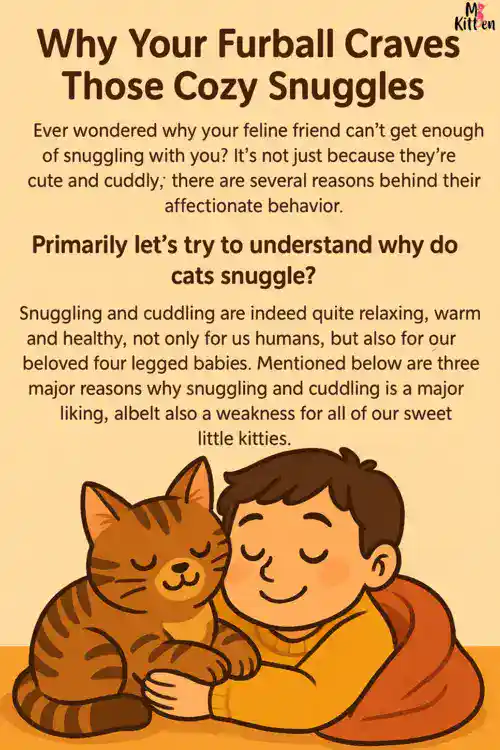
Why Your Furball Craves Those Cozy Snuggles
Ever wondered why your feline friend can’t get enough of snuggling with you? It’s not just because they’re cute and cuddly; there are several reasons behind their affectionate behavior.
Cats are known to be particular about their surroundings and the company they keep. So, when they choose to snuggle, it’s a significant display of trust and affection. Let’s dive into the reasons behind this behavior.
Primarily let’s try to understand why do cats snuggle?
Snuggling and cuddling are indeed quite relaxing, warm and healthy, not only for us humans, but also for our beloved four legged babies. Mentioned below are three major reasons why snuggling and cuddling is a major liking, albeit also a weakness for all of our sweet little kitties.
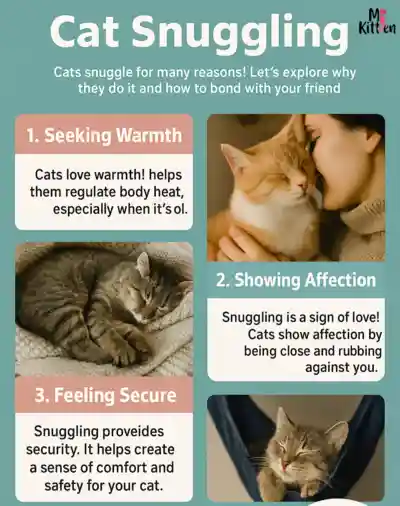
Seeking Warmth: Your Cat's Natural Heating Strategy
Cats are drawn to warmth, and your body heat is an attractive source of comfort for them. In the wild, cats often seek out sunny spots or warm dens to conserve energy and stay cozy.
Domesticated cats retain this instinct, making your lap or a warm blanket their go-to spot for relaxation. By snuggling up, they’re able to regulate their body temperature and feel more secure.
You must have noticed your beloved feline fur ball scouting for warm places to cosily nap at, and this is essentially because your catto needs to maintain a warm body temperature. She prefers staying cosy and comfy, especially whilst asleep. And while a kitty perch near the window pane or a cat bed would ideally be great for your kitty, but however your darling baby would any day prefer purring her nap hours away on your lap or by cuddling and snuggling another furry friend.
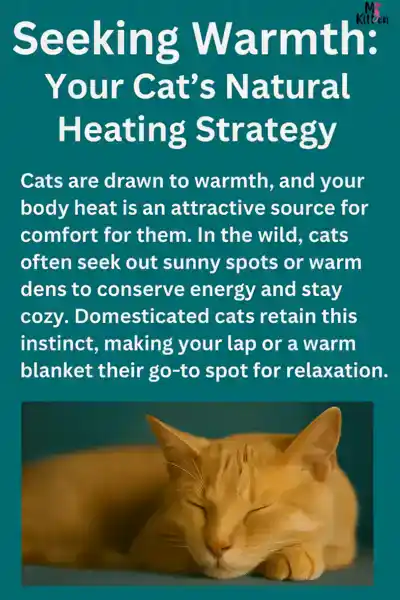
Safety First: The Vulnerable Side of Your Brave Kitty
Despite their tough exterior, cats have a vulnerable side. When they snuggle, they’re often seeking a sense of safety and protection. By curling up in your presence, they’re able to feel more secure and less exposed to potential threats.
This behavior is rooted in their wild ancestors, who would often hide or seek shelter to avoid predators. Your cat views you as a source of comfort and security, much like a mother cat would provide for her kittens.
Yes you read that right. Our supremely adorable kitties snuggle and cuddle as they seek warmth, safety and protection from their hooman. This is a feline behavioural trait that cats naturally inherit during their tender kittenhood days. Snuggling with her mama cat is something that provides great satisfaction with a lot of warmth and security to a little baby kitten for sale.
Furthermore all the teeny-tiny young and innocent kittens even make sure to sleep together in a tight bundle in order to keep themselves warm, and this also instils in them a feeling of being safe and protected. However cattos retain their early childhood memories, and they ergo continue to crave for such loving, affectionate snuggles and cuddles later on in life too.
Your cute as a button fur ball hence scouts for protection and security, that she finds when she approaches you for a comforting nap in your lap. It is also interesting to note that it’s not only snuggling and cuddling, but several other eclectic cat behavioural traits such as purring, kneading, rubbing and butting her head against your face and body, or even sleeping around your neck that cats actually tend to possess during their mellow days of infancy, and adult cattos eventually carry these kitten like behavioural traits throughout their lives.
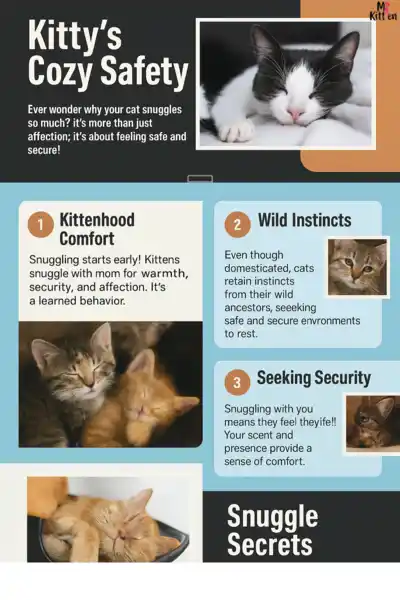
Bonding Time: Strengthening Your Feline Friendship
Snuggling is an essential way to strengthen the bond between you and your cat. When your cat initiates cuddles or nuzzles, it’s a sign that they’re comfortable and trusting of your presence.
By reciprocating their affection, you’re able to deepen your relationship and create a more meaningful connection. This mutual affection can lead to a more fulfilling and enjoyable companionship for both you and your feline friend.
Cats equate snuggling and cuddling with bonding. Our kitties look upto us for food, protection and a shelter, but unlike the most misconstrued notion of a cat being self-centred, a kitty rather makes sure to reciprocate her love, and she does so by snuggling and cuddling with her hooman parent, albeit the head butts and the constant purring, licking etc. are also few other sweet tokens of our fur ball’s thick love and affection.
Cats therefore simply snuggle against their hooman solely for the purpose of bonding, and as a loving pet parent, you must spend lots of time cuddling your cute as a button catto in case you wish to strengthen your bond with your fur baby.
Furthermore herein it is also important to mention that cuddling is not only enjoyable, but it also helps keep your kitty healthy as her contentment level shoots up while being cuddled, and this therefore results in production of antibodies that keeps your cat healthy. However not all cats enjoy being cuddled, and hence mentioned below is a detailed understanding of different cat breeds and how does your cattos breed impact her snuggling and cuddling habits.
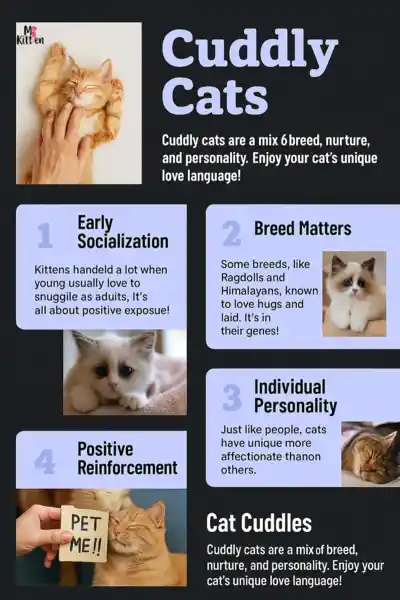
What Makes Some Cats More Cuddly Than Others?
While some cats are naturally more affectionate, others prefer to keep to themselves. This disparity in cuddliness can be attributed to several factors, including genetics and early life experiences.
- There are a some specific cat breeds who thoroughly enjoy cuddling and snuggling as compared to the other cats. Persians, Ragdolls, Maine Coons and Scottish Fold are few such highly sociable breeds who would purposely curl in your lap, and that indeed would be their most comfy spot for a quick
- The more active breeds such as the Bengal, Bombay, Abyssinian, and the Siamese cat might be a little less affectionate, albeit exceptions are always there.
And while a cat’s breed can only render a bleak insight into the temperament of a kitty, the reality might actually be extremely different as a cat’s demeanour is a combination of various factors. Also there are quite a lot of cats who are rather cold and stand-offish in their conduct. Those cats appear to be somewhat timid and wild, but haven’t you ever thought why those felines actually behave like that?
It's in Their DNA
Genetics play a significant role in determining a cat’s temperament and affectionate nature. Some breeds are known to be more cuddly and demanding of attention, while others are more aloof.
For instance, breeds like the British Shorthair and the Maine Coon are often described as having affectionate personalities. On the other hand, cats like the Siamese are known for their extroverted and clingy nature.
Well the two major key factors that make our beloved munchkins more or less snuggly and loving as compared to the other cattos are genetics and early socialization, which are explained below.
While it remains largely obscure if genetics can actually alter the personality of a cat, but however breeding does demonstrate that genetics plays a pivotal role in shaping up the cat’s temperament, at least to a certain extent.
Ailurophiles and the cat fanciers have been primarily breeding cats solely for their physical appearances, but herein it is pertinent to note that some cat breeds seem to be distinctly friendlier and much more affectionate than the other cats. However that being said, breed per se is not the stand-alone parameter that could necessarily guarantee the exact personality profile and behavioural traits of a cat.
Kittenhood Matters
Kittens primarily learn to snuggle and cuddle with their mother and litter mates. The initial months of infancy are hence quite important as that is when the social skills of a kitten are actually developed. Each experience that a kitten encounters during his first few months would undoubtedly leave a lasting impression on his naive mind, and that would thereby play a cardinal role in the overall formation of a kitten’s personality.
It is interesting to note that kittens who are positively stimulated and socialized early on in life tend to be much more gregarious, friendly and affable as they grow up. These kittens are usually not timid, and they completely love those snuggles and cuddles. Also they would constantly shower you with those sweet head butts and soft kisses.
However on the other side there are also some kittens who are insufficiently exposed to humans, and they have unfortunately witnessed traumatic experiences at an early age. These are typically the feral kittens or the kittens who are forcefully and repeatedly bred, and such kittens would naturally be fearful and unfriendly towards humans. They even turn out to be extremely bellicose, hostile and aggressive as adult cats.
It is therefore important that kittens should not be forcefully bred. They shouldn’t be confined in caged and should ideally remain with their mother until atleast eight to twelve weeks of age. Furthermore kittens must be petted and socialized with humans, especially when they are around three to seven weeks old because this initial experience with humans can greatly mould their personalities and comfort level around their hooman parent with whom they would lovingly cuddle as grown up cats.
Early social development and initial human interaction is therefore a major factor, and is much more important than genetics or the cat breed as it would alone help you gauge how loving and cuddly your adult catto would turn out to be because kittens who are regularly petted and handled by humans grow up into sweet chummy cats with a hail- fellow-well-met demeanour.
Early socialization is crucial in shaping a cat’s behavior and affectionate tendencies. Kittens that are handled gently and frequently from an early age are more likely to grow into cuddly cats.
This early interaction helps kittens develop trust and become more comfortable with human interaction, laying the foundation for a lifelong bond between cat and owner.
Bonding with your cat through cuddles not only strengthens your relationship but also provides your cat with a sense of security and comfort.
Mastering the Art of Cat Cuddles: Tips for Snuggle Success
To encourage cat snuggles, create cozy spots that invite relaxation. Plush blankets, soft cushions, and warm laps can make your feline friend feel at ease, promoting cuddles and snuggles.
Creating Irresistible Cozy Spots That Invite Snuggling
Designate a quiet, comfortable area where your cat can curl up and feel safe. This could be a cat bed or a blanket fort, tailored to your cat’s preferences. By doing so, you’ll be creating an environment that fosters cat snuggles and strengthens your bond.
Respecting Your Feline’s Personal Space and Cuddle Boundaries
Not every cat is in the mood for cuddles. Respect your cat’s personal space and let them initiate contact. By doing so, you’ll ensure a positive experience for both you and your feline companion, making cat snuggles a enjoyable and meaningful experience.
By following these simple tips, you can master the art of cat cuddles and enjoy a deeper, more affectionate relationship with your feline friend.
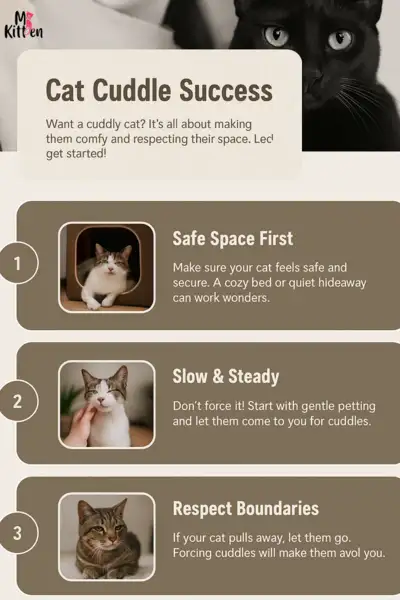
FAQ
FAQ
Why do cats snuggle with their owners?
Cats snuggle with their owners for various reasons, including seeking warmth, safety, and forming a stronger bond. This behavior is a natural expression of their affection and trust.
What does it mean when my cat kneads while cuddling?
When your cat kneads while cuddling, it’s a sign of comfort and relaxation. Kneading is a leftover behavior from kittenhood, when they used to nurse and knead their mother’s belly for milk.
Can I encourage my cat to be more cuddly?
Yes, you can encourage your cat to be more cuddly by creating a cozy and comfortable environment, respecting their personal space, and engaging in gentle, affectionate interactions. Early socialization and positive reinforcement can also play a significant role in shaping your cat’s snuggling tendencies.
Why do some cats prefer not to cuddle?
Some cats may not be as cuddly due to their genetic predispositions, early life experiences, or individual personalities. It’s essential to respect your cat’s boundaries and not force them to cuddle if they’re not in the mood.
How can I tell if my cat is enjoying our cuddle time?
Pay attention to your cat’s body language. If they’re relaxed, purring, and nuzzling, it’s likely they’re enjoying the cuddle time. On the other hand, if they’re tense, trying to escape, or displaying aggressive behavior, it’s best to give them some space.
Can cuddling with my cat strengthen our bond?
Absolutely! Cuddling with your cat can strengthen your bond by releasing oxytocin, often referred to as the “love hormone,” which promotes feelings of attachment and affection. Regular, gentle interactions can help deepen your relationship with your feline companion.

